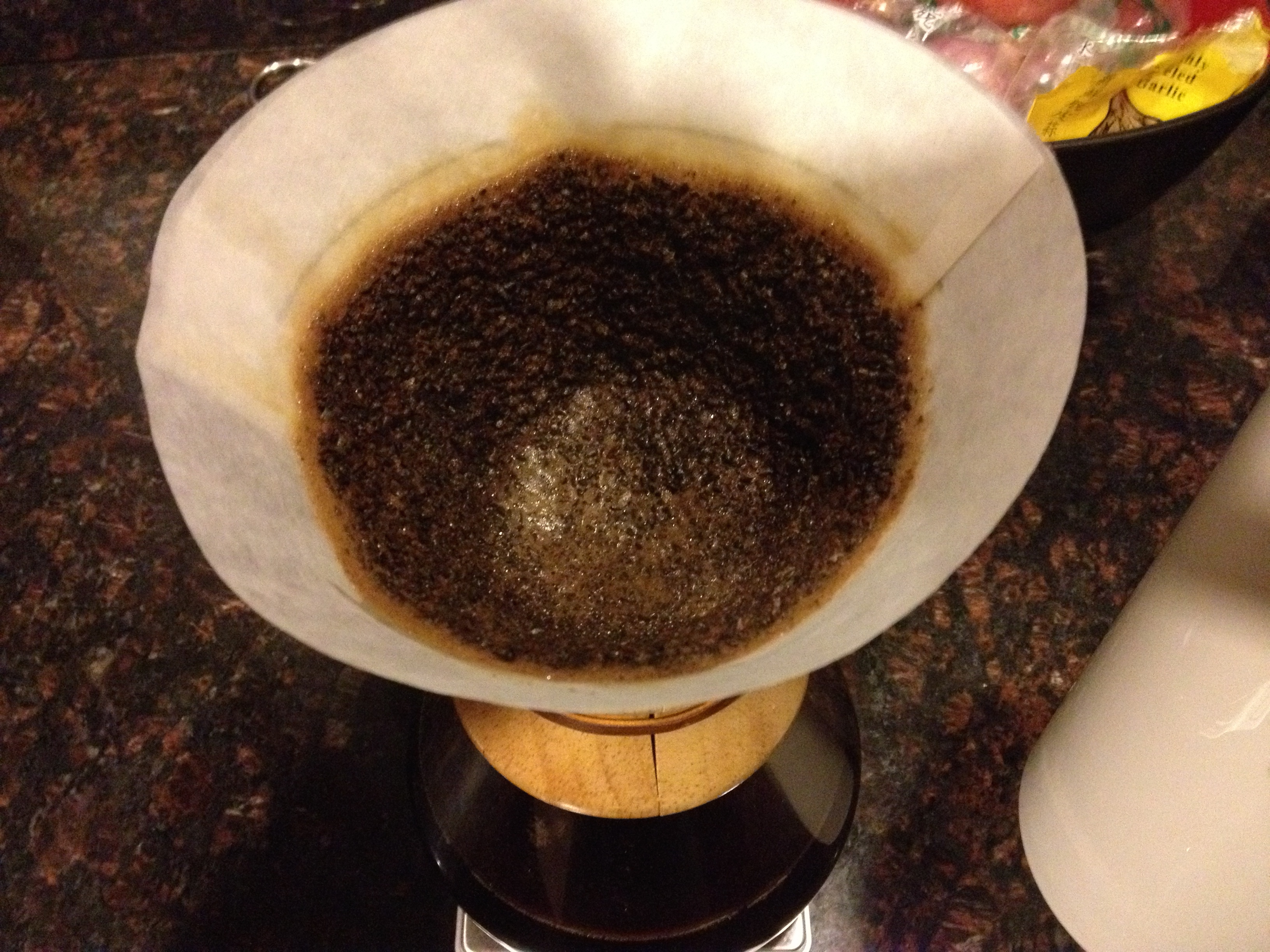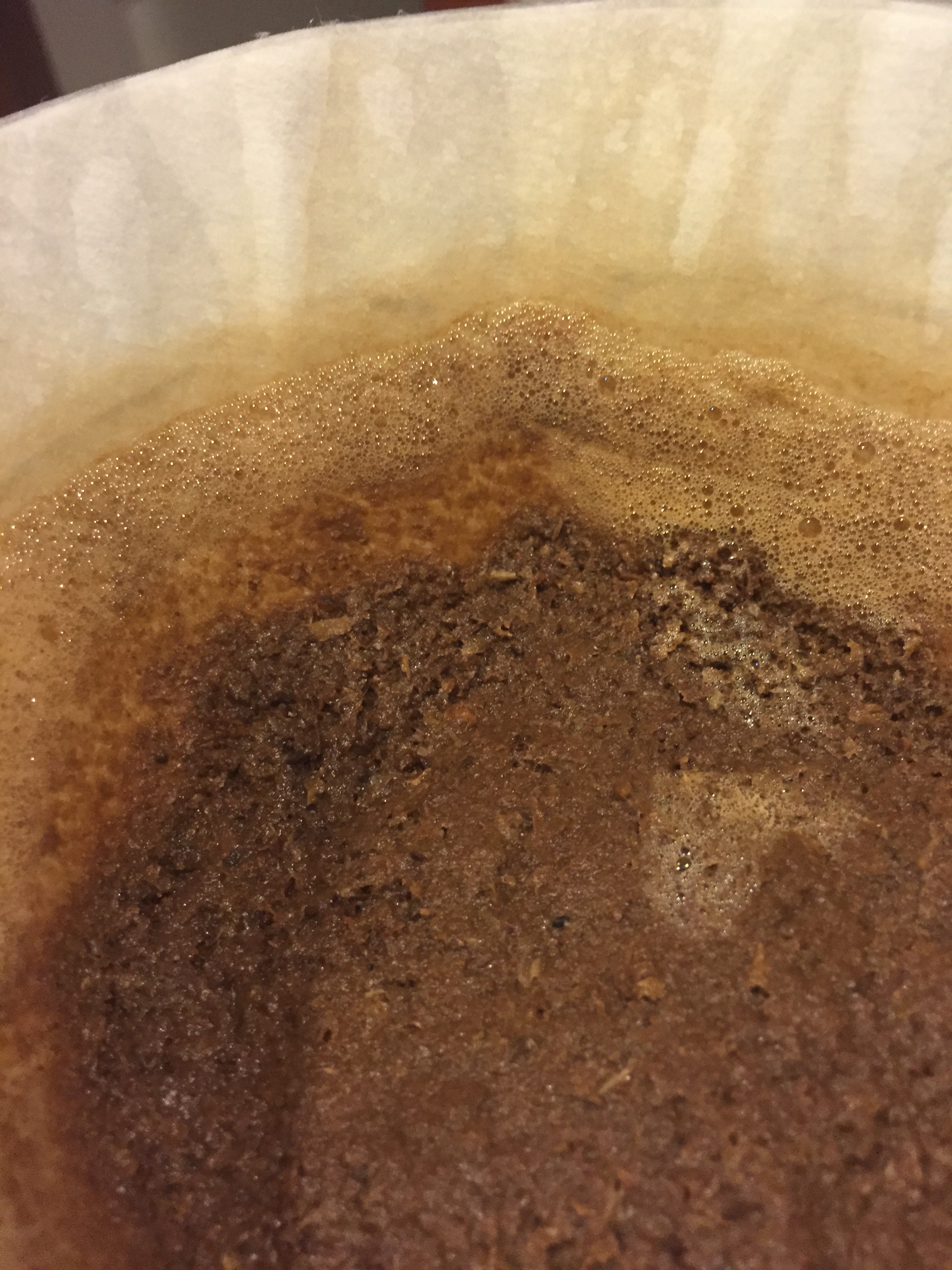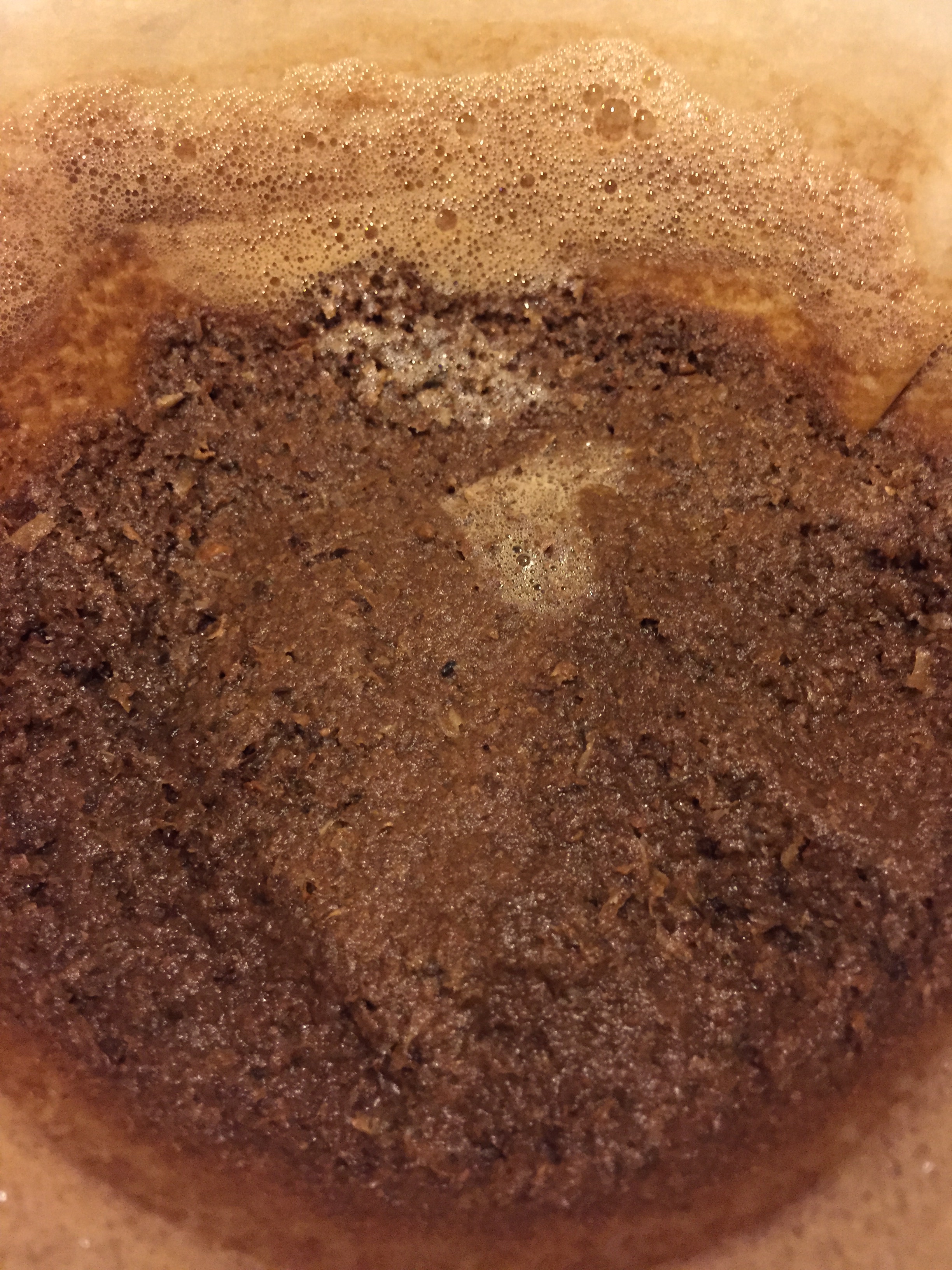Edited January 12, 2015

Pictured above is a classic example of what Scott Rao refers to in his book Everything but Espresso as "high and dry" grounds, exactly what you do not want to see in your filter: an inverted cone with a thick layer of grounds stuck to the sides of your filter.
In this case, I was brewing in a hurry and did one long pour instead of my usual three distinct pouring phases in which I intentionally get the water stream near the edge to keep all the grounds agitated and in the slurry.
The problem with high and dry grounds is that they are left behind in the brewing process and your final extraction rate is much lower, because you're only brewing the beans that are in the slurry. In this case it looks like nearly half of the beans are high and dry, potentially leading to a very low extraction (I need that TDS meter!).
To avoid high and dry grounds, pour your water in ever-widening, concentric circles starting from the center of the slurry. In this way, once you get to the edge, you are pushing the grounds back towards the center. If you pour correctly, your grounds should look like this when done:


It's also important to keep the water stream from the extreme edges, i.e. don't pour directly onto the sides of the filter, because the force of the water will push a lot of water straight through the filter instead of into the slurry where it can extract lipids from the coffee. Pouring directly onto the filter like that also leads to a weaker, less-extracted cup.
It may also be better to pour in two or three phases so that you can work those grounds down from the sides of the filter. This may, however, affect the overall brewing temperature over time, an experiment I plan to run in the near future. 'Till then, stick with the pour method that keeps your grounds all together instead of stuck to the sides of the filter.
Updated: Added photos.
